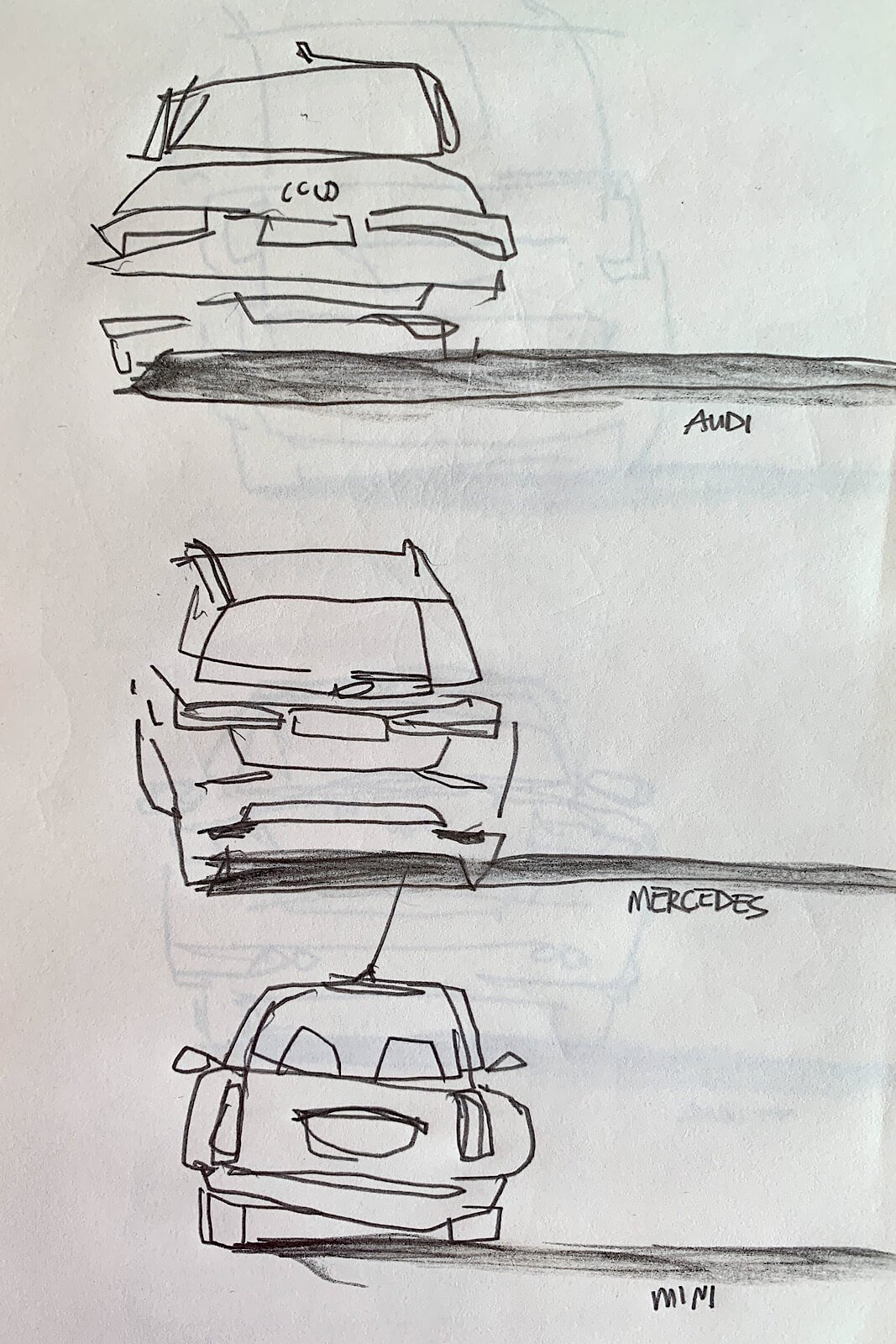Road trip sketching: Passenger seat drawing on the motorway
Sitting Still
Ever since I was little road trips have been a time for drawing and colouring in. In recent years I’ve been quite literal in this use of car passenger time and enjoy filling my Moleskine sketchbooks with views of the motorway. As a mixed media landscape artist it provides an opportunity to practice a spot of eye feasting and hone quick response drawing skills as views zoom by. Making good use of sitting still on a long journey helps me feel productive and allows my curious mind to find compositions in otherwise overlooked places.
Drawing cars
In the summer of 2019, when driving beyond the limits of your town was once again permissible (crazy to think that was a thing) and cruising along a motorway seemed positively rebellious, I started drawing cars. While I enjoy the lines of a well designed automobile, an appreciation learned in part from the vehicle designers at the RCA (their department being adjacent to mine) and a fascination with American classic cars, the average car on the British motorway does not fill me with joy. Unless of course you stop looking at them as cars and see them as quirky shapes with bright taillights, hovering over dark contrasting shadows that glide across a ribbon of grey tarmacadam, punctuated with white stripes and a snaking central reservation. Put in the right context almost anything becomes appealing to draw.
Truth be told I thought cars would be difficult to draw. For me they were one of those things that all of a sudden artistic logic went right out the window and the accuracy police loomed large saying “you’ve got to draw this correctly or else.” Or else you what? I’d get two points on my pen licence and have my drawing privileges revoked? Surely not! So I started drawing cars with all their personality quirks, cheeky blacked out windows, winking lights, pouty bumpers and testosterone packed tail fins. It all became rather amusing.
Congleton
A curious perk of motorway drawing has been the awareness of names. In order to keep a record of roughly where the drawing was made, taking into account any one drawing may take several miles to sketch on paper, I mark down the town name shown parallel to the road I’m on. A glance at the satnav is sufficient, the name is then noted down or incorporated into the drawing. To me it’s a curious reminder of ancient histories and the story of language as it’s evolved.
For example a quick google search reveals that the wonderfully quirky name Congleton could come from either the Saxon word cung hill (round hill) or old Norse kang (bend), with the word tun meaning settlement, farm or village. All of a sudden you can imagine why, over time, the mouthful of cung hill town morphed into Congleton. Next time you’re on the M6 give it pause for thought… but only if you’re the passenger, let’s be sensible about these things.
High-vis
Another added bonus of motorway drawing is all the high-vis. There’s so much neon on the motorway, it’s fantastic for a highlighter wielding artist like me! First off there’s the glowing red of the tale lights. Mingle this with a slice of cadmium yellow rear licence plate, set against dark paintwork, and the whole thing pops… as it’s been designed to do, funnily enough. Catching a highway maintenance van with is reflective orange chevrons adds another dimension to the sketching journey.
Glimpsing the bold high-vis bands in a sea of silver and blue vehicles brightens things up, as well as being an added challenge to grab as many details before you zoom by. These flashes of colour dance along the road with the added blocks of cobalt blue motorway signs, punctuating the journey with their mile markers and promises of journeys end.
Autumn colours
This past autumn I’ve had a couple of opportunities to keep up my M1 drawing. This time it was the changing colours of the season that caught my attention. Road sides are a wonderful place to view autumn colours up close. Verges are often planted with trees and shrubs that display their changing leaves in great concentrated swathes along a roadside. Their flaming colours leap up to the sky, breaking the band of slick black road and murky cloud with yellows, golds, luminous limes and beautiful burnt oranges.

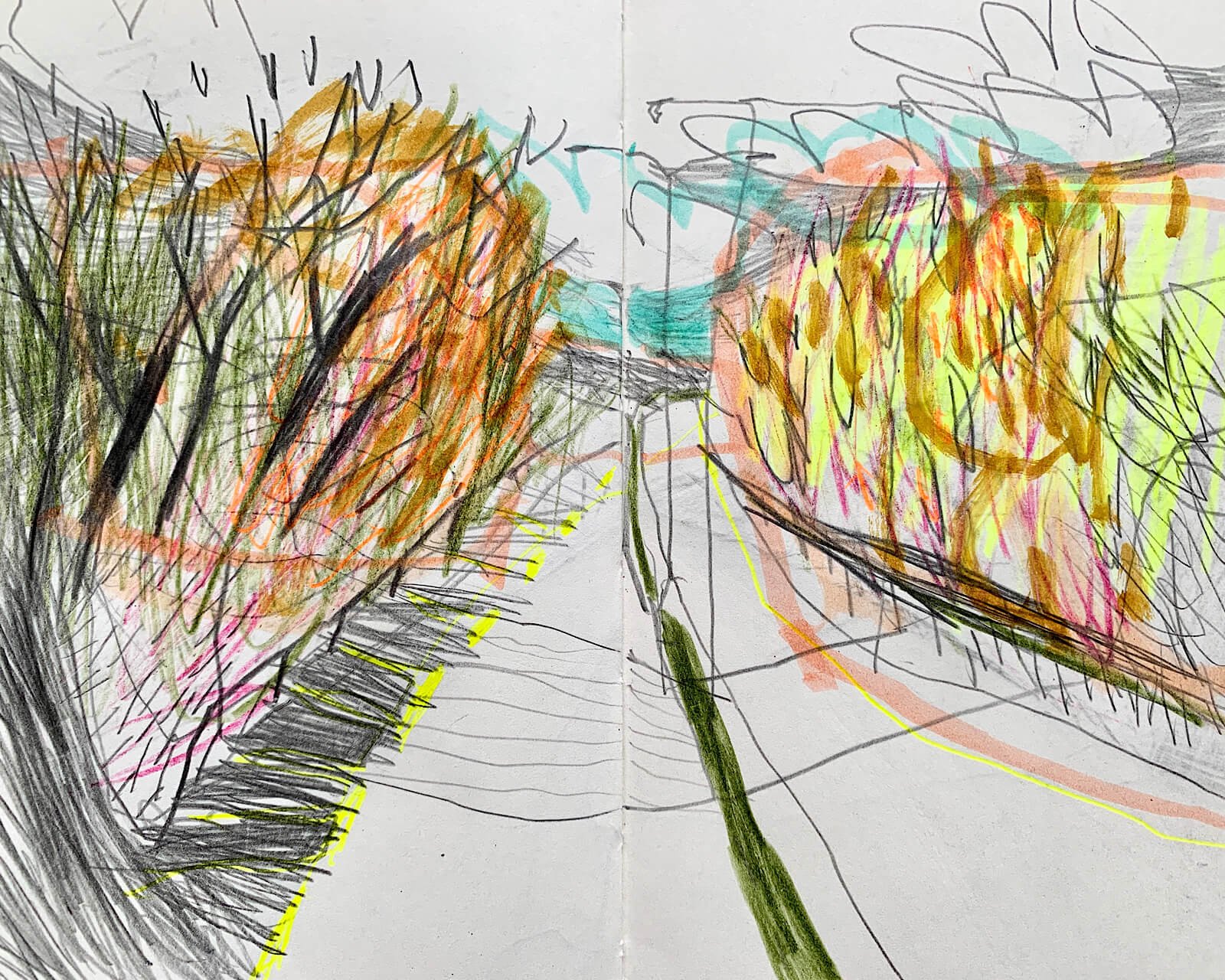
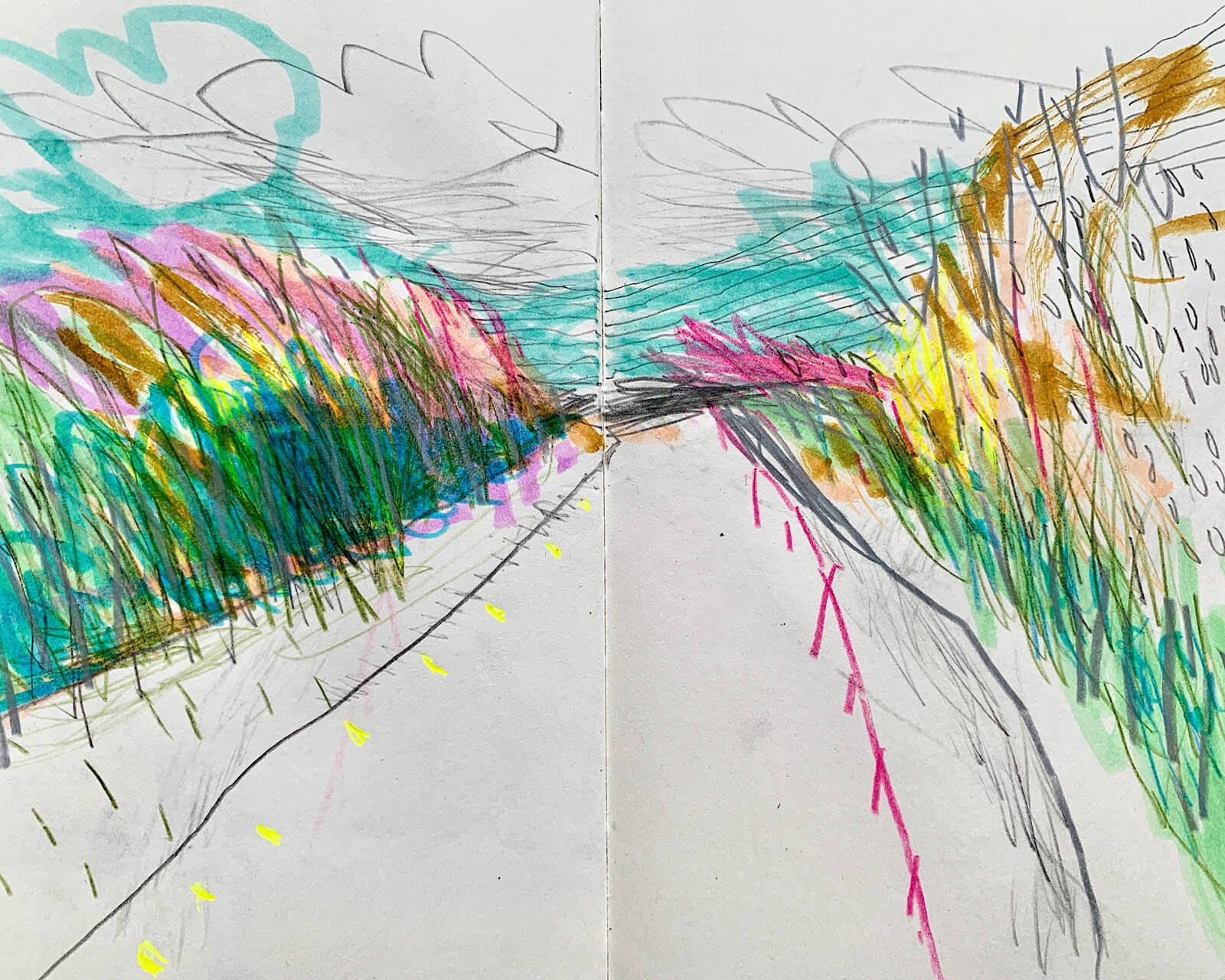
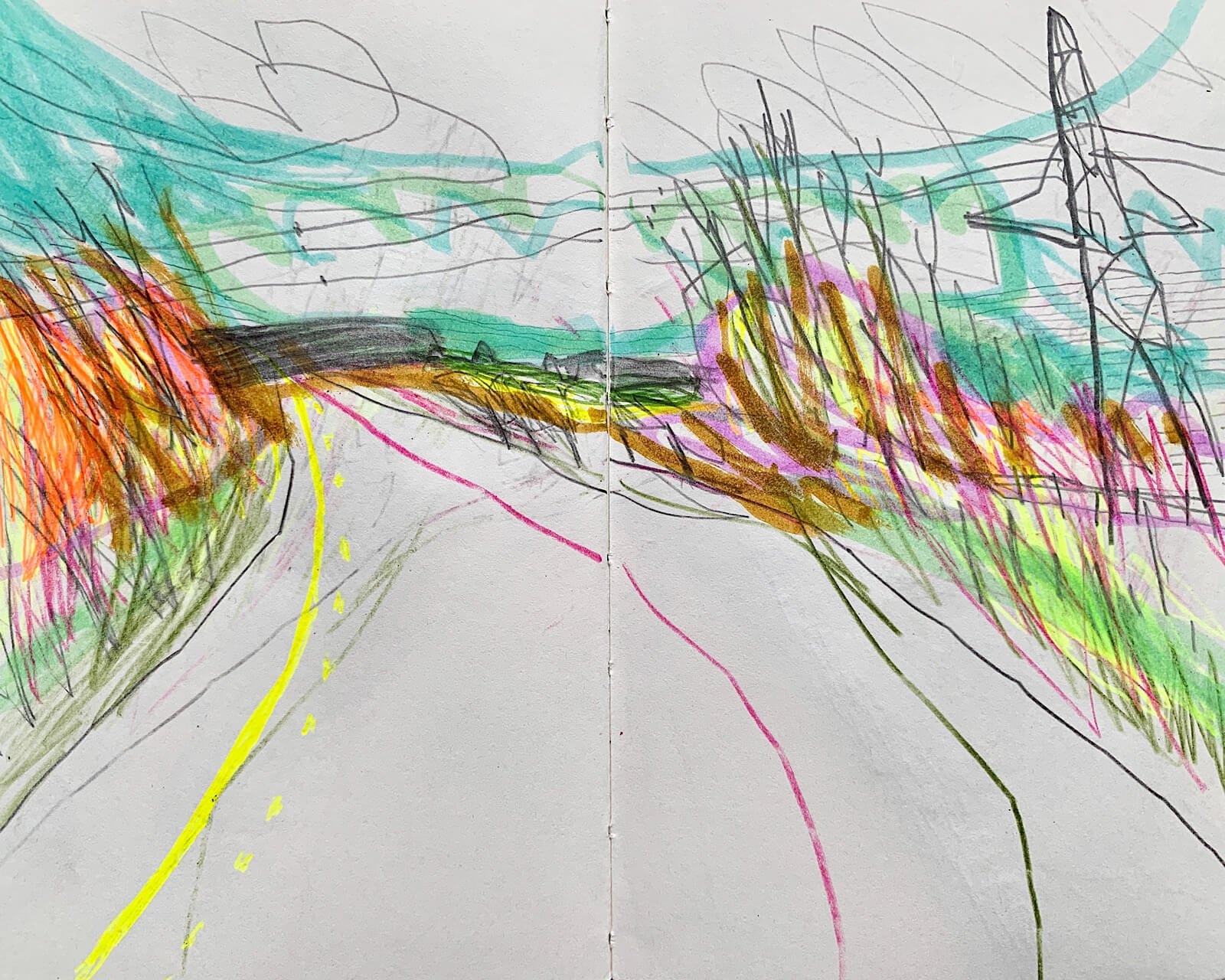
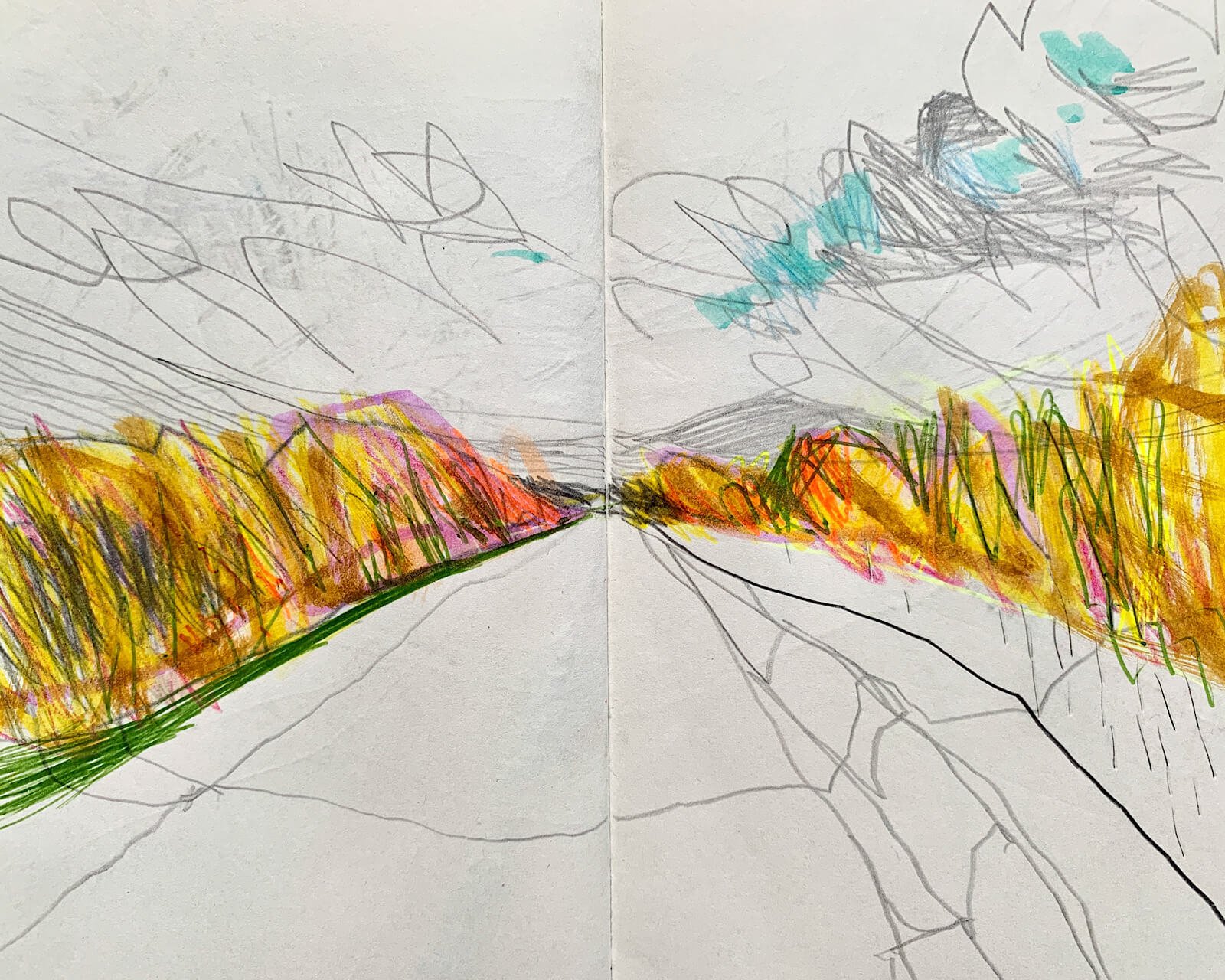
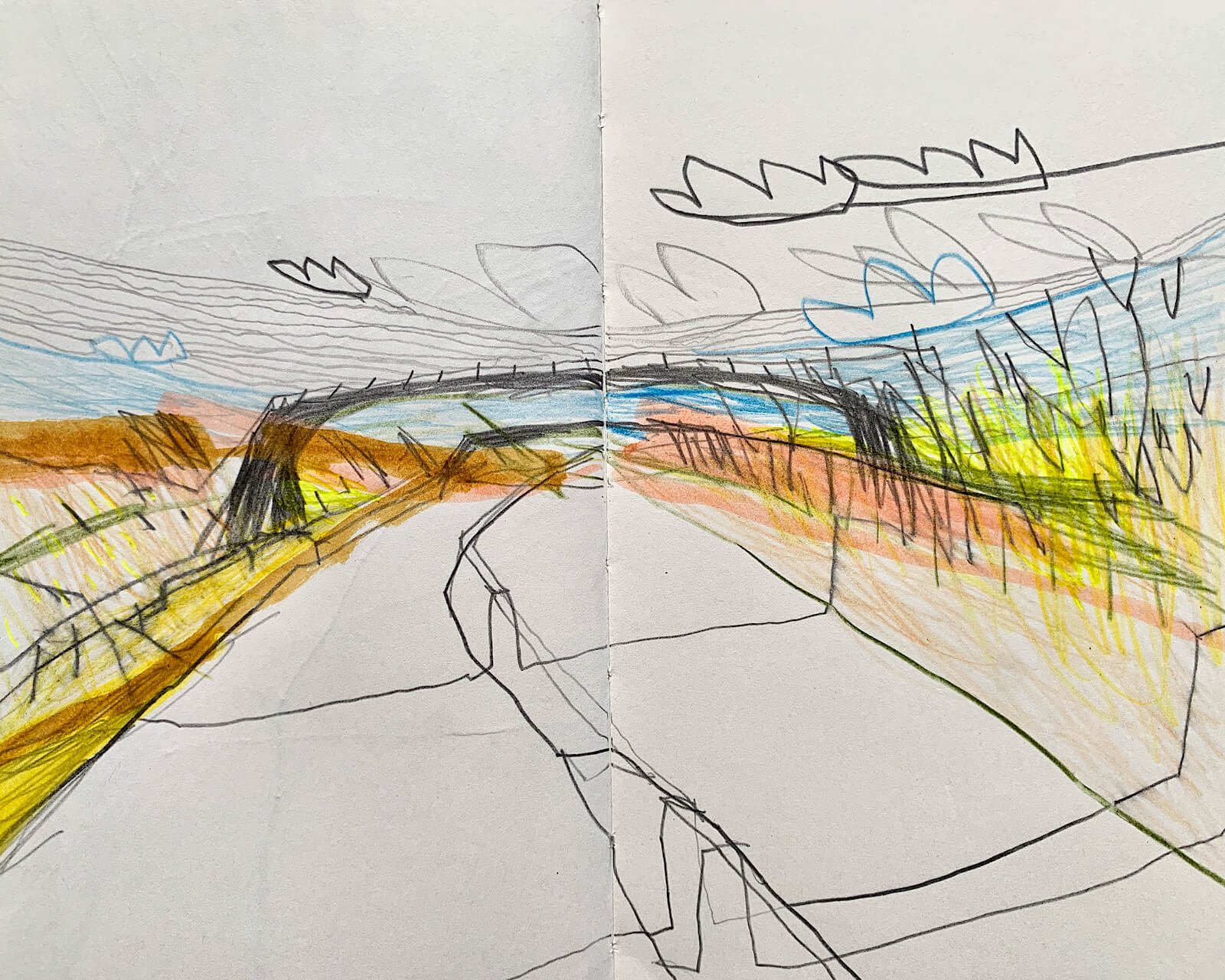
If you look carefully salmon pinks and purples emerge in the myriad mingle of turning leaves. These are the moments in any drawing that I love the best. When looking crosses the realm of sensible into a heightened sense of deep concentration. This is when unexpected colours emerge that make the drawing richer.
Winter wonders
Even traveling during the in-between of Christmas and New Year, when motorways are notoriously busy and cold grey days move along with miles and miles of sameness, there are little gems of differences to be found. During my last M1 journey I chose only to focus on how the sky is framed in the distance by the vegetation on the roadside verges.
Sometimes it’s wide and open with clouds billowing up at an an angle. Other times it’s framed by a narrowing of foliage as a road climbs or curves ahead. When I’ve shared snippets of what I’ve drawn an obvious question that I’m often asked is “where are the cars?” The simple truth is on this particular day they weren’t relevant to me and I get to make this choice because I hold the pencil.
The other wonder of winter drawing has been the flashes of vibrant greens and golds playing against the stark blacks and charcoal of the tarmac. Mix this with a chunk of painted yellow from a new SOS lay-by, as it wizzes by, and a glorious palette of cadmium yellow lemon hue, oxide of chromium green, mars black and titanium white is all set to explore.
Back in my cozy studio, is it any wonder this is the first combination I’m delving into in my new colour book? Greens look so hopeful in the depth of winter, like a promise of good things to come.
Fancy seeing another atmospheric landscape collection?
I invite you to step into the Edge Landscapes portfolio and enjoy a wander through a series of abstract landscapes conjured out of playing with layers and layers of lovely paint.







